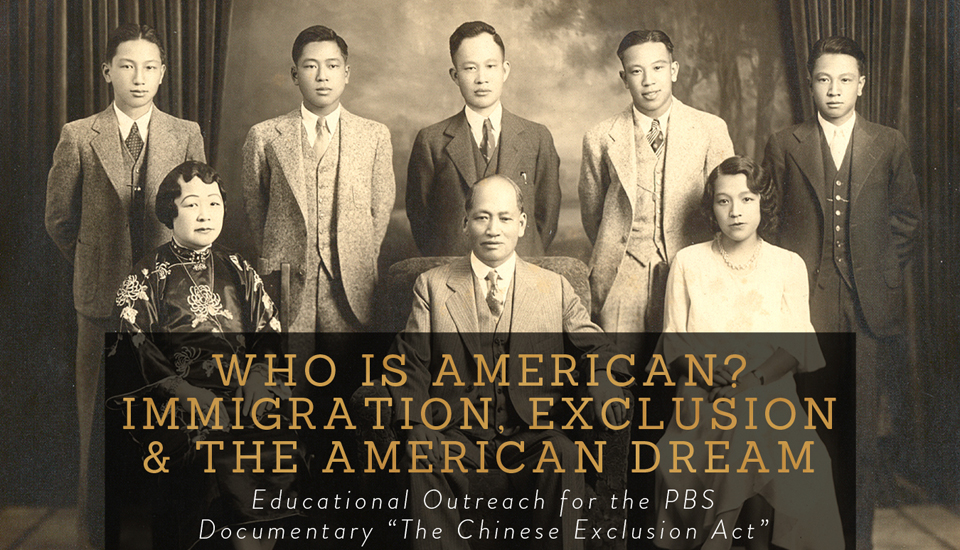
Li-Shin Yu and Ric Burns’ documentary The Chinese Exclusion Act is the story of the welcome that the United States gave to Chinese immigrants. There is much to be learned from this excellent history of how the self-proclaimed “nation of immigrants” treated the would-be Chinese settlers.
The film does three things extraordinarily well: It describes the specific background of how the Chinese sought to relocate into the country they rather optimistically referred to as Gold Mountain. It also shows how the situation of the Chinese in the U.S. was unique, but also shared to varying degrees with other immigrants, particularly peoples of color. Finally, in recounting immigrant struggles, Yu and Burns provide a road map of effective methods to fight for inclusion.
The Chinese Exclusion Act of 1882 was different from other nativist legislation in that it explicitly targeted a single race—the only time a racial group was singled out as undesirable. But we constantly see how it is rooted in the same racism and xenophobia that propelled similar actions, both legal and illegal, against other outsiders.
Historians Philip Choy, John Kiu Wei, Renqiu Yu, Kevin Starr and Erika Lee walk us through an abbreviated narrative of Chinese-American relations starting with the Opium Wars of the 1840s and running up through the American Civil War.
As with other exploitable minority groups, the Chinese were valued for their labor. Immigrants from China came to work in the Gold Rush and on the Transcontinental Railway. Like other disposable labor forces, they worked long and hard for low wages doing dangerous jobs. When their labor was no longer valuable, they were discarded.
As the Gold Rush slowed down to a crawl and once the railway steamed from coast to coast, demand for Chinese labor diminished. The nation’s lawmakers responded to the rise of white racism and the failure of post-Civil War Reconstruction with a series of bills aimed at what they viewed as civil threats. The former Black slaves, Mexicans, labor militants and Chinese were the principal targets.
The passage of the Exclusion Act stemmed the tide of Chinese immigration. But much like Donald Trump’s Build the Wall campaign, this government imprimatur opened the door to racist violence throughout the Western United States. From tiny settlements to large cities, Chinese became the targets of beatings, burnings and murder. Chinese homes were burned to the ground, shops were looted and Chinatowns completely demolished. In a single minefield incident in May of 1887, 34 Chinese miners were killed. When Los Angeles Chinatown was attacked by mobs, police remained in their bars drinking while 18 Chinese, including women and children, were lynched in the largest mass lynching in U.S. history. In place after place, vigilante mobs drove entire communities out.
Hostile mobs were inflamed by the same racist rhetoric that incited anti-Black and anti-Mexican riots. Anti-Chinese discriminatory legislation was copied from the Southern Black Codes.
Citing the American founding ideals did little good. Chinese fought back using the court system against laws that restricted their freedoms. Immigration cases were lost. But Chinese Americans did win some small civil rights victories.
It wasn’t until World War II that the tide really turned. The U.S. found China a useful ally in the war against Japan. The Exclusion Act was an embarrassment as the U.S. tried to rally support in Asia. Finally, in 1943, Franklin Delano Roosevelt persuaded a reluctant Congress to repeal the anachronistic law, replacing it with the Magnuson Act, which promoted meritorious immigration over race-based quota systems.
Current immigration debates revive echoes of the race-based system which defined U.S. immigration policy for well over half a century. Li-Shin Yu and Ric Burns’ film could not be more timely.
In honor of Asian Pacific American Heritage Month, the Center for Asian American Media in San Francisco has helped to fund and promote six compelling documentaries for public television broadcast in May. These films include Finding Kukan, Random Acts of Legacy and Who Is Arthur Chu? premiering on season 6 of America ReFramed. Resistance at Tule Lake and The Chinese Exclusion Act will screen on PBS and WORLD Channel. The CAAM-produced Pacific Gateway: Angel Island VR will air digitally on PBS’s American Experience. Check your local listings for exact airdates and times.










